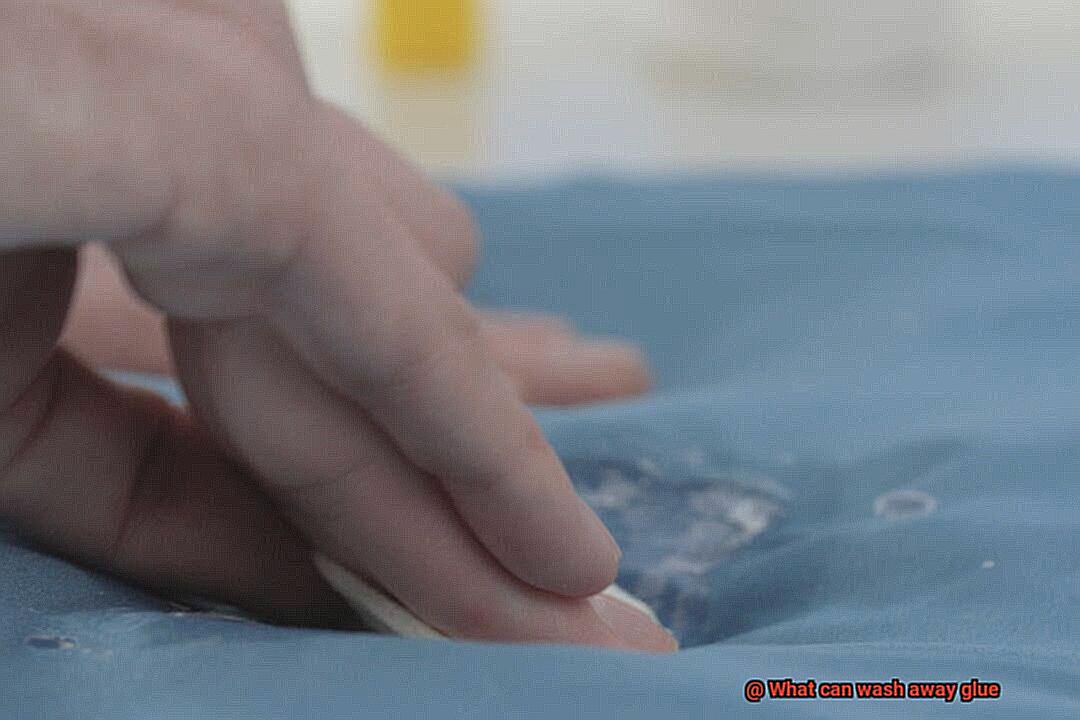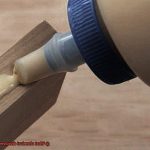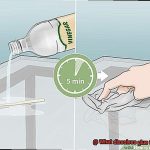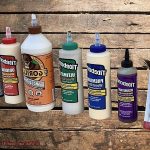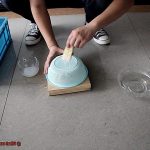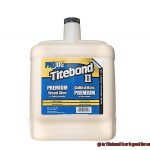Glue – the sticky substance that holds our world together. From repairing broken objects to creating beautiful crafts, glue is a versatile material we use every day. But what happens when you need to remove it? It’s a common problem we all face; trying to get rid of stubborn glue that just won’t budge. Maybe you accidentally spilled glue on your table or found an old object with dried-up glue residue. Whatever the situation, we’ve got you covered.
In this blog post, we’re going to explore some of the most effective ways to wash away glue from different surfaces. We’ll take a look at everything from household items like vinegar and baking soda to specialized solvents designed for specific types of glue. And speaking of types of glue, did you know there are many different kinds out there? Don’t worry; we’ll help you choose the right solvent for each one.

So whether you’re a DIY enthusiast or just need to clean up after an arts and crafts session gone wrong, fear not. With our expert tips and tricks, removing unwanted glue will be a breeze. So sit tight, relax, and let’s dive into the world of glue removal together.
What is Glue?
Contents
Glue is a versatile and essential substance used to join surfaces together. It can be made from a variety of materials, ranging from natural sources such as animal hides and bones to synthetic polymers and resins. From ancient Egyptians to modern-day industries, glue has been a crucial component in crafting and manufacturing.
This sticky substance comes in various colors, textures, and forms, including liquid, gel, paste, or spray. Each type of glue has unique properties and recommended uses. For instance, some glues are designed to be water-resistant or heat-resistant, while others are ideal for specific materials like wood, metal, or plastic.
Removing glue from surfaces can be challenging, but with the right solvents, it’s possible to get rid of it without causing damage. Water is a common solvent for many types of glue as it weakens the bonds between molecules. However, not all glues are water-soluble. Superglue or cyanoacrylate adhesive requires a different solution.
Vinegar is an acid that can dissolve some types of glue made from animal products like hide glue or bone glue. Rubbing alcohol is another effective solvent for many types of glue, including rubber cement and tape residue.
Acetone found in nail polish remover is a strong solvent that can break down many types of glue, especially superglue or cyanoacrylate adhesive. However, acetone should be used carefully as it can damage some surfaces like plastic or painted surfaces.
Types of Glue
The world of glue is vast and varied, with a plethora of options available for every need. Each type of glue has its own unique properties that make it suitable for specific applications, and knowing the right type for the job is essential. Let’s explore the different types of glue and their uses in more detail.
PVA Glue
PVA glue, or Polyvinyl Acetate, is a water-based adhesive that is perfect for bonding porous materials such as paper, wood, and fabric. PVA glue is commonly used in woodworking, paper crafts, and bookbinding due to its ability to dry clear.
The best part about PVA glue is that it’s easy to clean up with warm soapy water, making it a popular choice for crafting projects. Additionally, PVA glue is non-toxic and safe for children to use.
Super Glue
Super glue, also known as cyanoacrylate adhesive, is a fast-drying adhesive that forms a strong bond on non-porous materials such as metal, plastic, and ceramic. Its quick-setting properties make it ideal for quick repairs and DIY projects that require a strong bond.
However, removing superglue can be difficult once it has dried. Acetone is the most effective way to remove superglue, but it should be used with caution as it can damage certain surfaces.
Epoxy
Epoxy is a two-part adhesive that is known for its strength and durability. It can bond a wide range of materials including metal, glass, and plastic. Epoxy’s strength makes it an ideal choice for construction and industrial applications where a strong bond is required.
However, removing epoxy glue can be challenging once it has dried. The best way to remove epoxy glue is with a chemical solvent designed specifically for that purpose.
Hot Glue
Hot glue, also known as hot melt adhesive, is a thermoplastic adhesive that is applied using a hot glue gun. It dries quickly and can bond a variety of materials including wood, metal, and plastic. Hot glue is commonly used in crafting and DIY projects due to its versatility.
However, removing hot glue can be a bit tricky. Heating up the glue until it becomes soft and then wiping it away with a cloth or scraper is the best way to remove it.
Contact Cement
Contact cement is a rubber-based adhesive that forms a strong bond when the two surfaces are pressed together. It can withstand high temperatures and moisture, making it perfect for bonding materials such as leather, rubber, and metal.
Contact cement is commonly used in construction and automotive industries where a strong, permanent bond is required.
Water as a Solvent for Glue
One of the most common questions I get is whether or not water can be used as a solvent for glue. The answer is yes, but it’s important to keep in mind that not all types of glue are created equal.
Water-based glues, like white school glue or wood glue, can be easily washed away with warm water and soap. The water breaks down the adhesive properties of the glue, making it simple to remove. But don’t forget to use hot water instead of cold water.
Heat speeds up the chemical reaction between the glue and water, making it easier to dissolve and remove. For even better results, add soap to the mix to break down the glue even further.
However, if you’re dealing with a more stubborn adhesive like superglue or cyanoacrylate adhesive, water alone won’t do the trick. These types of adhesives are not water-soluble and require a different approach. Instead, you’ll need to use a solvent such as acetone or nail polish remover to dissolve the glue.
It’s essential to know what type of adhesive you’re dealing with before trying to wash it away with water. Otherwise, you may end up wasting time and effort on an ineffective solution. So always take a moment to determine what type of adhesive you’re working with before attempting to wash it away.
Vinegar as a Solvent for Glue
Breathe a sigh of relief because vinegar is here to save the day. As an expert in using vinegar as a solvent for glue, I am here to share some valuable insights that will help you get rid of those pesky glue stains in no time.
Vinegar is a common household item that can dissolve the bond between glue and the surface it’s stuck to. The most commonly used type of vinegar is white vinegar due to its effectiveness and affordability. It can remove various types of glue including school glue, wood glue, and even superglue.
Using vinegar as a solvent for glue is simple yet powerful. To get started, apply the vinegar directly to the glue using a cloth or paper towel. Give it several minutes to penetrate and dissolve the bond. Then, use a clean cloth to wipe away or scrape off the dissolved glue.
It’s important to keep in mind that vinegar may not work on all types of glue. For instance, industrial-strength adhesives or adhesives exposed to heat may require other solvents such as acetone or rubbing alcohol. However, for everyday household glues, vinegar works wonders.
Rubbing Alcohol as a Solvent for Glue
Say goodbye to stubborn glue stains that ruin your projects and furniture, because I’ve got an effective solution for you – rubbing alcohol. As an expert on this topic, let me show you how to use rubbing alcohol as a solvent for glue.
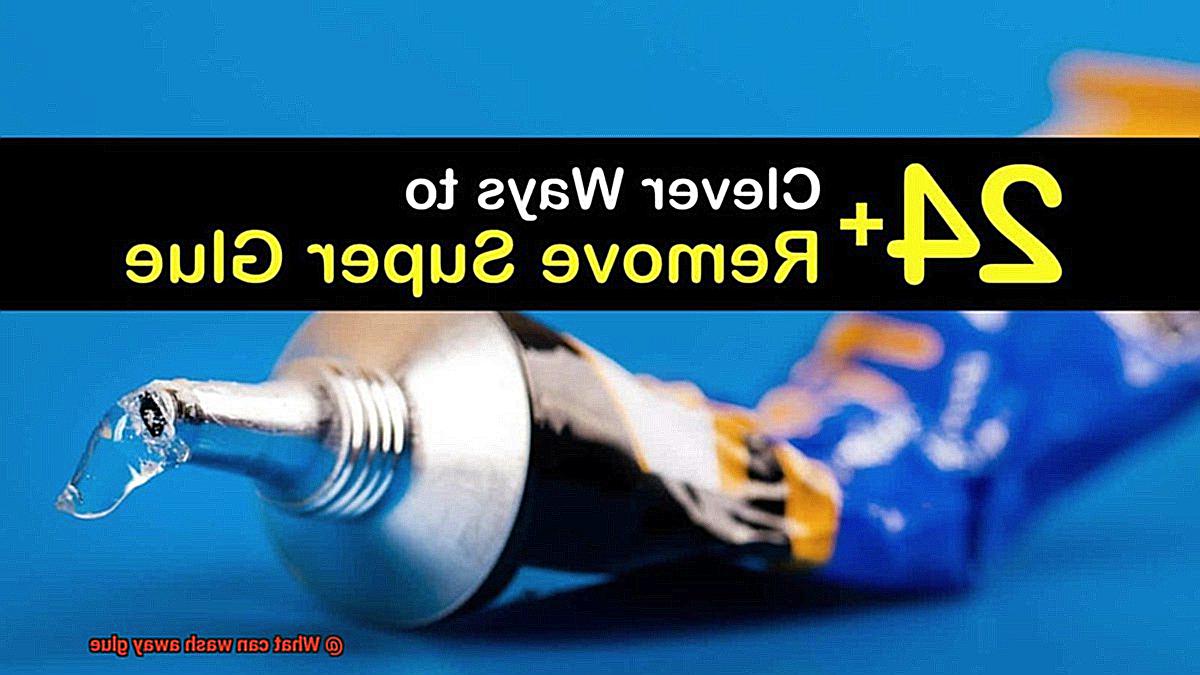
Rubbing alcohol is a common household item that contains a high percentage of isopropyl alcohol, which acts as a powerful solvent. Its ability to dissolve and break down the adhesive properties of glue makes it a popular choice for removing glue from various surfaces. However, it’s important to note that not all types of glue and surfaces are compatible with rubbing alcohol. Always test a small area first to avoid damage.
To use rubbing alcohol as a solvent for glue, start by applying the solution directly to the affected area and letting it sit for a few minutes. This allows the alcohol to penetrate the glue and break its bond. Once the glue has been adequately dissolved, use a cloth or sponge to wipe away the residue. Repeat the process as necessary until all of the glue has been removed.
It’s crucial to exercise caution when using rubbing alcohol as it can be flammable. To avoid any accidents, keep it away from heat sources and open flames, wear gloves when handling it, and work in a well-ventilated area.
In summary, rubbing alcohol is an effective solution for removing glue from various surfaces due to its solvent properties. However, it’s important to remember that not all types of glue and surfaces are compatible with rubbing alcohol. Always test a small inconspicuous area first before applying it to the entire affected surface.
To wrap things up, let’s recap our key takeaways:
- Rubbing alcohol is an effective solvent for removing glue from various surfaces
- Test a small area first before applying rubbing alcohol to the entire affected surface
- Exercise caution when using rubbing alcohol as it can be flammable
- Always work in a well-ventilated area and wear gloves when handling rubbing alcohol
Acetone as a Solvent for Glue
Look no further than acetone- a highly effective solvent for removing certain types of adhesives, such as cyanoacrylate (super glue).
Acetone is a colorless liquid with a pungent odor that can be found in many household items, including nail polish remover and paint thinner. It works by breaking down the adhesive properties of glue, causing it to dissolve or soften. However, it’s crucial to use acetone with caution, as it is highly flammable and can irritate the skin and eyes if not handled properly.
When using acetone to remove glue, follow these simple steps: apply a small amount of acetone onto a clean cloth or cotton ball and dab it onto the affected surface. Let the acetone sit for a few minutes before wiping it away with a clean cloth. Repeat this process until all the glue residue is removed.
It’s worth noting that acetone may not work on all types of glue. Some adhesives, like epoxy or silicone-based glues, may require different solvents or methods for removal. Always read the manufacturer’s instructions on any adhesive product before attempting to remove it.
To ensure your safety while using acetone, wear gloves and eye protection, and work in a well-ventilated area away from any heat sources or flames. It’s always better to be safe than sorry.
Tips and Precautions When Using Solvents to Remove Glue
If you’re looking to remove stubborn glue from a surface, solvents can be a useful solution. However, it’s important to handle them with care and follow precautions to avoid any harm. Here are some tips and precautions to keep in mind when using solvents to remove glue:
Read the label
The label of any solvent provides important information on how to use it safely and effectively. Be sure to read the label carefully before using the solvent.
Work in a well-ventilated area

Many solvents can emit fumes that can be harmful if inhaled. Always work in a well-ventilated area or wear a respirator if necessary.
Wear protective gear
To prevent any skin or eye irritation, always wear gloves and eye protection when handling solvents.
Test on a small area first
Before applying the solvent to the entire surface, test it on a small, inconspicuous area first. This will help you avoid any potential damage or discoloration.
Use a soft cloth or brush
When applying the solvent, use a soft cloth or brush to avoid scratching or damaging the surface.
Clean up properly
After using the solvent, make sure to clean up any spills and dispose of any rags or materials used properly. Solvents are chemicals that need to be handled with care and disposed of properly.
Alternatives to Chemical Solvents to Remove Glue
There are natural alternatives that can be just as effective without posing any health risks or environmental harm. Here are the top natural options:
- Natural Oils: Coconut oil or olive oil can dissolve glue and make it easier to wipe away. With just a small amount, apply it onto the affected area and let it sit for a few minutes before wiping away with a cloth.
- Heat: Applying heat can soften the glue and make it easier to remove. Use a hair dryer or heat gun to warm up the glue until it becomes pliable, then peel it off or wipe it away with a cloth.
- Vinegar: The acidity in vinegar can break down the adhesive properties of glue, making it easier to remove. Soak a cloth in vinegar and place it over the affected area for a few minutes before wiping away.
- Rubbing Alcohol or Vodka: Alcohol is another effective way to break down the glue’s adhesion and allow easy removal. Apply rubbing alcohol or vodka onto the affected area and wipe it away with a cloth.
Also Read: How To Remove Adhesive From Wall Without Damaging Paint
Conclusion
In conclusion, glue is a ubiquitous substance that we use in our daily lives. But when it comes to removing it, things can get tricky. Fear not, though. Armed with the right solvents and techniques, you can easily bid those stubborn glue stains farewell.
Before attempting to remove any adhesive residue, it’s crucial to identify the type of glue you’re dealing with. For water-based glues like PVA or white school glue, water is an effective solvent. Vinegar is an excellent natural alternative that can dissolve various types of glue, including superglue and wood glue. Rubbing alcohol or vodka also works wonders in removing pesky adhesive residue from various surfaces.
However, when handling solvents, safety should always come first. Always read the label carefully before using the solvent and work in a well-ventilated area. Protective gear such as gloves and eye protection are a must-have. Testing on a small area first is also advisable before applying the solvent with a soft cloth or brush.
If you prefer natural alternatives, coconut oil or olive oil are great options for removing adhesive residue without posing any health risks or environmental harm. Heat application using a hairdryer or heat gun can also do the trick. The vinegar soaking technique and rubbing alcohol are other effective ways to remove unwanted glue stains.
Overall, removing unwanted glue stains doesn’t have to be a daunting task.

